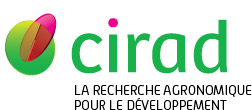Stachurski Frédéric, Boulanger Nathalie, Blisnick Adrien, Vial Laurence, Bonnet Sarah.
2022. Climate change alone cannot explain altered tick distribution across Europe: A spotlight on endemic and invasive tick species.
In : Climate, ticks and disease. Nuttall Patt (ed.)
|
Version publiée
- Anglais
Accès réservé aux personnels Cirad Utilisation soumise à autorisation de l'auteur ou du Cirad. ID605089.pdf Télécharger (3MB) | Demander une copie |
Résumé : The effect of climate on the evolution of tick populations remains difficult to disentangle from other possible causes and undoubtedly varies depending on the region concerned and local tick species. Large-scale, long-term monitoring is, therefore, necessary to accurately assess climatic impact on tick populations. Climate change can alter tick populations, either indirectly by affecting vertebrate host populations or directly by increasing or decreasing their numbers. These ectoparasites, and in particular hard ticks, spend almost their entire life cycle in the external environment, thus climatic conditions influence their activity, viability and distribution. This expert opinion aims to illustrate the impact of climate change, and its association with other variables, on the distribution and abundance of tick populations in Europe using Ixodes ricinus and Hyalomma marginatum as typical examples of endemic and invasive species, respectively.
Auteurs et affiliations
-
Stachurski Frédéric, CIRAD-BIOS-UMR ASTRE (FRA)
 ORCID: 0009-0009-5904-3375
ORCID: 0009-0009-5904-3375
- Boulanger Nathalie, Université de Strasbourg (FRA)
- Blisnick Adrien, Institut Pasteur (FRA)
- Vial Laurence, CIRAD-BIOS-UMR ASTRE (FRA)
- Bonnet Sarah, INRAE (FRA)
Autres liens de la publication
Source : Cirad-Agritrop (https://agritrop.cirad.fr/605089/)
[ Page générée et mise en cache le 2025-02-04 ]




